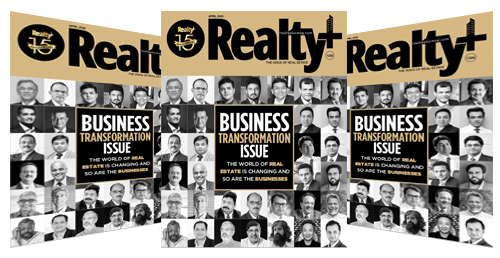Picture – L-R - Samarth Bajaj, Abu Jani & Sandeep Khosla and Kunal Rawal
What are the latest luxury homes trends and homebuyer's demands?
Samarth Bajaj, Founder and Director, Boheim - As I see it, India’s luxury housing market is evolving rapidly, driven by a lifestyle shift toward wellness, individuality, and flexibility—key aspects of the booming $6.3 trillion global wellness industry. Today’s luxury buyers are more design-savvy, seeking homes that merge aesthetic appeal with wellness benefits. Biophilic design, for example, is central to this approach, bringing in natural light, greenery, and organic materials that create a tranquil, rejuvenating environment, especially within urban settings. This trend reflects the growing demand for spaces that promote relaxation, creativity, and well-being.
We’re also seeing a focus on versatile layouts with larger square footage, ideal for multi-functional spaces that adapt seamlessly to a hybrid work-life balance. Buyers now expect features like home offices, wellness zones, and entertainment areas, showcasing a new standard in luxury that emphasizes flexibility and immersive experiences over traditional layouts.
Additionally, there’s a demand for truly bespoke services. Today’s luxury clientele is more design-conscious and willing to push the boundaries of traditional concepts. Rather than settling for “cookie-cutter” designs, they want unique, personalized spaces that reflect their evolving tastes and individuality. All of these trends signify a new era in luxury living, where homes not only embody luxury but also elevate wellness, adaptability, and personal expression at every turn.
What are some of the ways to incorporate traditional elements in modern homes?
Abu Jani & Sandeep Khosla - We have always drawn inspiration from various aspects of life, whether it’s our own couture, our travels over the years, the people in our lives or even our own home.
India remains our biggest inspiration always, and the eclectic nature of our interiors unfailingly adds a touch of grandeur to spaces. The keys is to ensure that the homes we design look personal and lived in without being too thematically “traditional” or “modern”. We ensure to seamlessly blend our details into the spaces we design and curate.
From fashion to interiors, how are designers extending their creativity to living spaces?
Kunal Rawal- For me, design is fluid—whether it’s fashion or interiors, creativity moves between them effortlessly. I approach spaces the way I approach couture: with an eye for detail, texture, and personality. Designing a living space becomes an extension of your identity, much like how a bespoke piece of clothing reflects who you are. It’s about creating environments that feel just as exclusive and tailored as couture.












